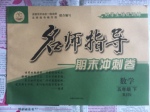题目内容
One Canada,Two Languages
Canada is one of the few nations in the world to have two official languages:English and French. There are 10 provinces in the country but only one of these—Quebec is known as “French Canada”. This is because it was founded by French explorers while British adventurers discovered the rest.
Canada left the British empire(帝国) in 1867 to become an independent country,and English and French have been recognized as the official languages ever since.
Most people speak English as their first language and the two national television networks broadcast in English throughout the country. Apart from in Quebec and a few places on the east coast,French television is very rare.
The same goes for traffic signs and menus,for example,outside of Quebec,there are only a few places where you’ll see traffic signs in French. In restaurants,it’s almost impossible to find French on the menu unless you are in the heartland (中心地带) of French Canada. However,all products sold in Canada must,by law,have labels (标签) and instructions in both languages.
In Canada’s English speaking provinces,official bilingualism(双语)means that students can choose to complete a special French language course. Under this programme,they are taught most of their subjects in French.
If a student begins the course in kindergarten (幼儿园) or Grade One,it is likely that all their lessons will be in French. However,if they start at junior high school,25 percent of the teaching will continue to be in English.
1.How many provinces are there in Canada?
A.Ten. B.Nine. C.Eleven. D.Two.
2.Which country controlled Canada before its independence?
A.France. B.Britain. C.America. D.Germany.
3.Where can you watch French television programmes?
A.Only in Quebec.
B.In Quebec and a few other places.
C.From the two national television networks.
D.All over Canada.
4.What about the education in Canada?
A.In English speaking provinces only English courses are offered there.
B.If you choose a special French language course,most of the subjects are taught in French.
C.The courses in primary school are all taught in English.
D.Most of the courses in junior high schools are taught in English.
5.Which of the following sentences is right?
A.English is the only official language,though French is also spoken there.
B.The two national television networks broadcast both in English and French.
C.All products sold in Canada must,by law,have labels and instructions in both English and French.
D.The lessons in kindergarten or Grade One are likely to be only in English.
1.解析:根据第一段第二句话可知。
答案:A
2.解析:根据第二段第一句话可知。
答案:B
3.解析:根据第三段可推出答案。
答案:B
4.解析:根据文章的最后两段可以推出只有B项是正确的。
答案:B
5.解析:根据第四段最后一句话可知C项是正确的,其他几项均与原文不符。
答案:C

 名师指导期末冲刺卷系列答案
名师指导期末冲刺卷系列答案One Canada, Two Languages
Canada is one of the few nations in the world to have two official languages: English and French. There are 10 provinces in the country but only one of these—Quebec is known as “French Canada”. This is because it was founded by French explorers while British adventurers discovered the rest.
Canada left the British empire(帝国) in 1867 to become an independent country and English and French have been recognized as the official languages ever since.
Most people speak English as their first language and the two national television networks broadcast in English throughout the country. Apart from in Quebec and a few places on the east coast, French television is very rare.
The same goes for traffic signs and menus, for example, outside of Quebec, there are only a few places where you’ll see traffic signs in French. In restaurants, it’s almost impossible to find French on the menu unless you are in the heartland (中心地带) of French Canada. However, all products sold in Canada must, by law, have labels (标签) and instructions in both languages.
In Canada’s English speaking provinces, official bilingualism (双语) means that students can choose to complete a special French language course. Under this program, they are taught most of their subjects in French.
If a student begins the course in kindergarten (幼儿园) or Grade One, it is likely that all their lessons will be in French. However, if they start at junior high school, 25 percent of the teaching will continue to be in English.
【小题1】How many provinces are there in Canada?
| A.Ten. | B.Nine. | C.Eleven. | D.Two. |
| A.France. | B.Britain. | C.America. | D.Germany |
| A.Only in Quebec. |
| B.In Quebec and a few other places. |
| C.From the two national television networks. |
| D.All over Canada |
| A.In English speaking provinces only English courses are offered. |
| B.If you choose a special French language course, most of the subjects are taught in French. |
| C.The courses in primary school are all taught in English. |
| D.Most of the courses in junior high schools are taught in English. |